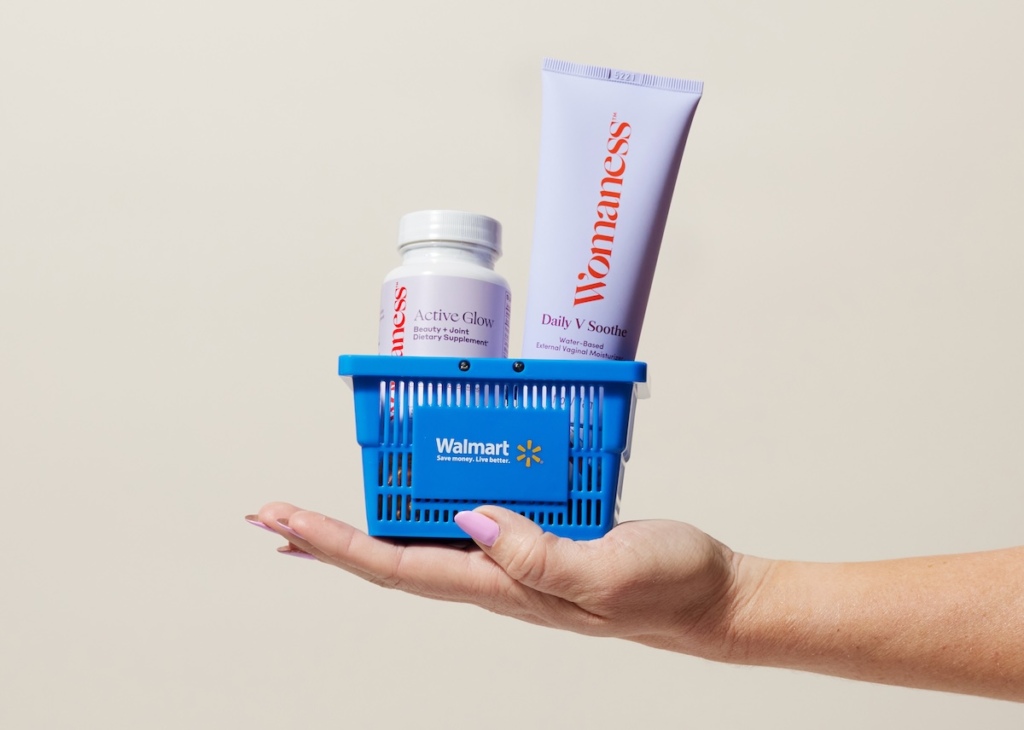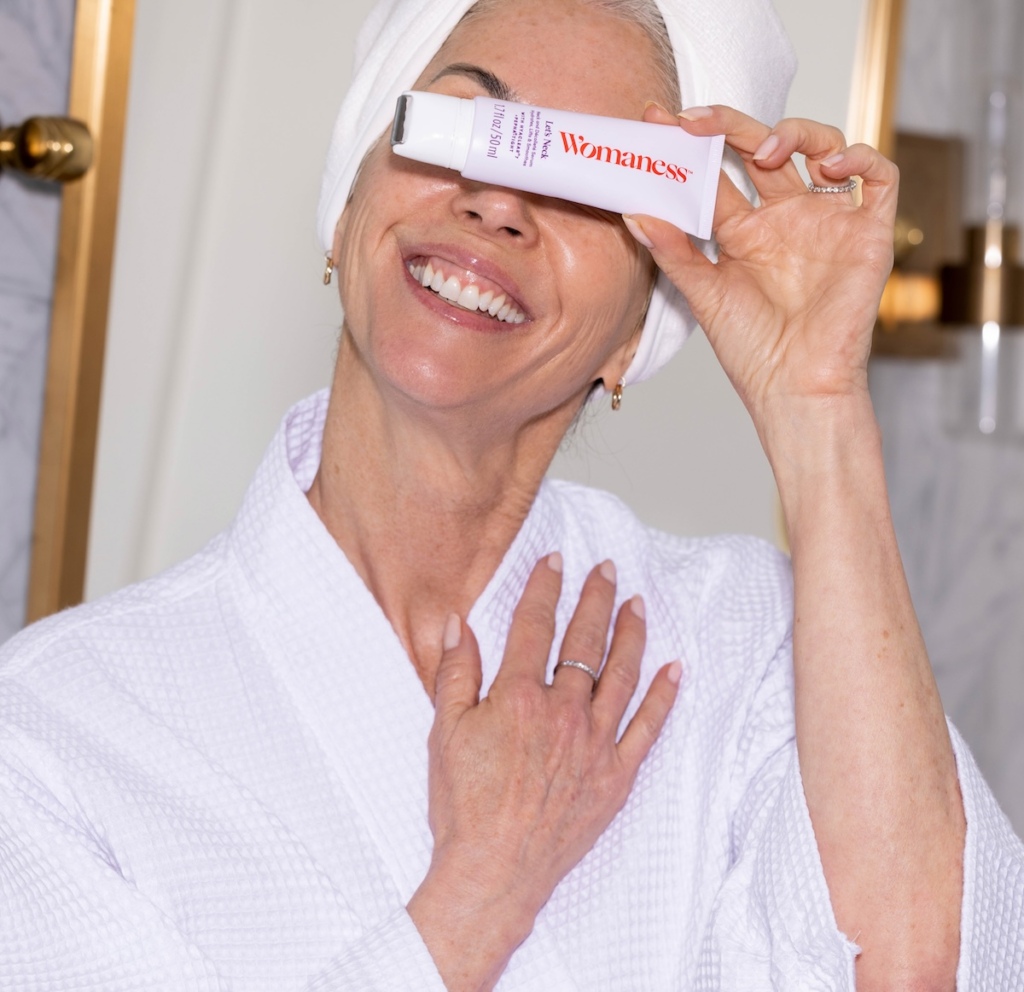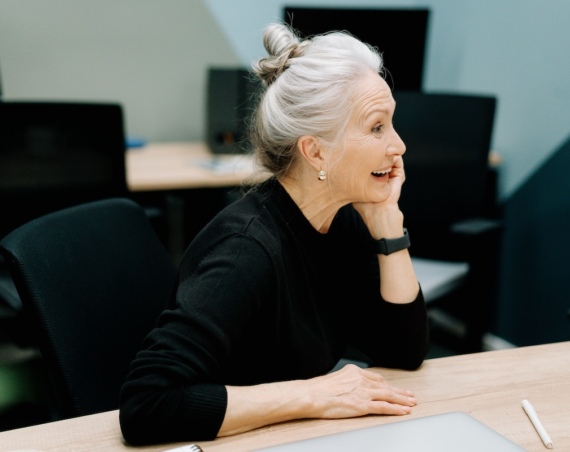
When Sally Mueller and Michelle Jacobs launched Womaness in 2021, they weren’t just building a brand – they were creating an entirely new retail category. Four years later, their journey from Target test stores to Ulta Beauty and now Walmart offers valuable lessons about timing, patience, and the challenge of educating an entire ecosystem.
“When we launched, the consumer response was incredible,” reflects Mueller, who brings 25 years of Target experience to her role as co-founder. “We received emails from women saying ‘Where were you when I went through this difficult period years ago? Thank God you exist.’ Women were absolutely ready for what we were offering. The challenge was that retailers weren’t quite there yet.”
The White Space Opportunity
The partnership between Mueller and Jacobs began with a simple observation: Despite their extensive experience launching brands for millennials and Gen Z, there was nothing modern for women in their own demographic – early 40s to mid-50s navigating perimenopause and menopause.
“Everything was legacy brands in sexual wellness and skincare,” explains Jacobs, whose background includes a decade at Real Simple magazine and roles at Pfizer Consumer Healthcare and Home Shopping Network. “Nobody was speaking to the actual changes happening in your body during perimenopause and menopause.”
Their research confirmed what they suspected: Women wanted a comprehensive solution that addressed the interconnected nature of menopausal symptoms, not products scattered across different categories and store sections.
“Our research showed that women were thinking about their bodies differently, and we wanted our product line to reflect that,” Jacobs notes. “They wanted to shop by solution – to walk into a store and find a perimenopause and menopause section where everything was together, because seeing products side by side helped them understand the full scope of symptoms and solutions.”
The Target Test: Early Lessons in Category Creation
Armed with Mueller’s deep retail relationships and understanding of merchandising, Womaness secured placement in Target test stores. However, the execution didn’t match their vision.
“We had select products positioned within the skincare section and others in intimate care, but these weren’t consistently implemented across all participating stores,” Mueller explains. “Some stores would just have three products here and three products there – it wasn’t a cohesive story.”
The fragmented placement undermined their core value proposition. Jacobs reflects: “This approach failed to deliver a coherent brand narrative and significantly hindered customer product discovery.”
The experience taught them that creating a new merchandising approach requires buy-in from the very top of an organization. “Success depends on leadership support that extends from decision-makers down to the teams responsible for planogram execution,” Mueller notes.
Finding the Right Partner at Ulta Beauty
Their following experience with Ulta Beauty highlighted the importance of company-wide alignment around new categories. Ulta’s wellness initiative provided the institutional framework that made their partnership particularly successful.
“Ulta Beauty has proven to be an exceptional partner,” Jacobs emphasizes. “Their wellness wall concept accommodates brands focused on different life stages with a holistic approach. They’ve demonstrated both strategic merchandising expertise by positioning our entire product line cohesively and remarkable patience in understanding that consumer education requires time.”
The key difference was institutional commitment. “Their company-wide wellness focus ensures organizational alignment from senior leadership through purchasing teams,” Jacobs explains. “This comprehensive commitment to the category is evident in every aspect of our partnership and the growth opportunities we’ve been given.”
At Ulta, Womaness has seven products merchandised together, combining skincare, sexual wellness, and supplements in one section – exactly the solution-oriented approach they envisioned.

Expanding Access Through Walmart
Most recently, Womaness has launched with Walmart, representing a strategic evolution toward broader accessibility. This partnership aligns with their core mission while addressing a different customer segment.
“Our collaboration with Walmart allows us to reach more women where they’re already shopping,” Mueller explains. “Their comprehensive approach and commitment to the category made them an ideal partner for expanding access.”
The Walmart partnership reflects lessons learned from previous retail experiences. “Their presentation included comprehensive category vision and implementation strategy, from in-store signage to significant door expansion plans,” Jacobs notes. “This level of strategic thinking and organizational commitment was essential to our decision to move forward with the partnership.”
Timing and Market Evolution
Looking back, Mueller and Jacobs recognize that timing played a crucial role in their different retail experiences. When they first approached Target, the broader cultural conversation around menopause was still nascent.
“The market transformation has been remarkable – from initial reluctance to discuss menopause to its current mainstream presence,” Jacobs observes. “As millennials enter their mid-40s, they’re driving more informed healthcare conversations and demanding better solutions from both providers and retailers.”
The founders were ahead of the curve, launching in 2021 before celebrities like Naomi Watts and media figures like Oprah significantly amplified the menopause conversation in late 2022. “We maintained market presence for approximately 18 months before celebrity advocacy significantly expanded public discourse,” Mueller notes. “Our early media strategy included outreach to major morning shows, with varying receptivity to the category discussion.”
Lessons for Category Creators
For entrepreneurs attempting to create new retail categories, the Womaness experience offers several key insights:
Organizational alignment is crucial: Success requires buy-in from retail leadership down to execution teams. Without this, even the best concepts get lost in translation.
Patience and timing: Category creation requires both time and market readiness. Both retailers and consumers need education and multiple touchpoints before new shopping behaviors emerge.
Early market entry advantage: While Womaness was early to market, their head start positioned them as category leaders when broader awareness eventually materialized.
Solution-oriented merchandising effectiveness: Consumers prefer problem-based shopping over traditional product categories, but this requires retailers to reconceptualize store organization and customer journey mapping.
As the menopause market continues to expand – with projections showing significant growth as millennials age into this demographic – Womaness’ early lessons in category creation offer a strategic framework for other brands attempting to reshape consumer discovery and purchase behavior for health solutions.
“This represents a fundamental market movement rather than a temporary trend, with continued expansion potential,” Mueller concludes. “It is now up to retail partners to determine whether to establish early category leadership or adopt a reactive approach based on competitor learnings.”



